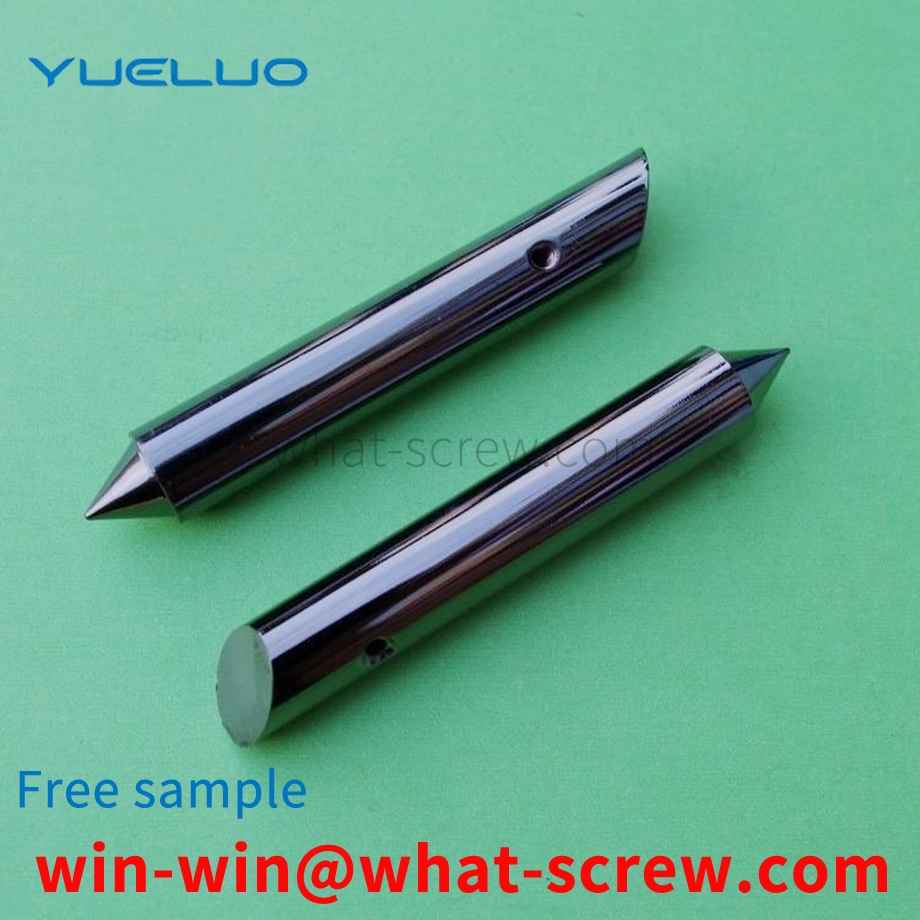Common types of common screws All kinds of common screws (20 pieces) a. Slotted: a word ( Minus ) b. Phillips: cross ( Plus ) c. Phil-Slot: a word / cross d. Hex Socket: hexagon socket e. One Way: One-way (can only be locked in, not out) A-4: Head Code/ head shape. a. Flat: Flat head (after locking, the top is flush with the work piece) b. Oval: salad head, O head, countersunk head screw unit of measure screw unit of measurec. Round: round headd. Pan: round flat heade. Truss: large round flat headf. Hex: hexagon head. A-5: Finish Code/Appearance treatment. Metric Self-tapping screw: Mark Tapping Type directly behind the product name. Ex: M3 x 6 –PPB, Tapping Type: M3 self-tapping screw, 6mm long, cross, round flat head, black plated. Generally, it is determined by product type or mark. For Sheet Metal or plastic parts. *Pitch = Threads per inch
A T-shaped grounding bolt comprises a connection platform, a hexagonal bolt is welded below the described connection platform, and the lower surface edge of the described connection platform is provided with a barb.
The screw is a fairly common structure in the technical field of machine parts assembly, and it mainly uses the mutual engagement characteristics of male and female threads to achieve the purpose of pressing the workpiece. At present, there are many kinds of screws on the market, and their functions are also very different. However, a stud and a rotating part by which the stud is rotated are the same basic structure.
Hydraulic wrench or pulling method Use hydraulic torque wrench or puller to fasten large screws, which saves effort and has high precision. However, hydraulic tools are expensive, screws of different sizes need to be equipped with different wrenches, and now the hydraulic pullers in the world are generally only M160×6. If the screws are too large, special specifications or very few in number, it is extremely uneconomical to equip them with hydraulic tightening tools.
Type 1 nut refers to an ordinary hexagonal nut with a nominal height of m ≥ 0.8D. Its type and size should meet the requirements of GB/T6170; while the height of type 2 nut is higher than that of type 1 nut, its type and size should comply with GB/T6170. T6175. There are two purposes to increase the type 2 nut: one is to obtain a relatively inexpensive nut that does not require heat treatment by increasing the height of the nut. Because D≤M16 grade 8 type 1 nuts do not need heat treatment, among grade 8 nuts, only the specifications of D>M16~39 use type 2 nuts. Obviously, type 1 nuts that do not need heat treatment cannot reach grade 9 nuts. Mechanical property requirements. Another purpose of specifying Type 2 nuts is to obtain a more ductile grade 12 nut. As the height of the nut increases, the guaranteed stress index can be achieved at a lower quenching and tempering hardness, so the toughness of the nut is increased. Classified by tooth spacing: standard teeth, regular teeth, fine teeth, very fine teeth and cross teeth. Classification by material: stainless steel hexagon nuts and carbon steel hexagon nuts, copper hexagon nuts, iron hexagon nuts. Classification by thickness: hexagonal thick nuts and hexagonal thin nuts. Classification by usage: hot melt copper nut, hot pressed copper nut, embedded copper nut and ultrasonic copper nut
We have many years of experience in the production and sales of screws, nuts, flat washers, etc. The main products are: nuts with stop washers, external tongue washers, copper hexagon nuts screws, GB97 stainless steel flat washers and other products, we can provide you with suitable products for you. Fastener Solutions.



















 Service Hotline
Service Hotline




